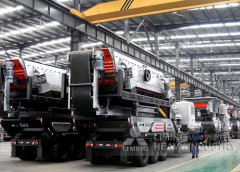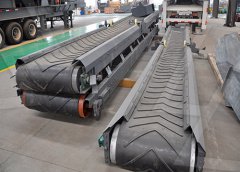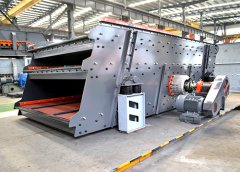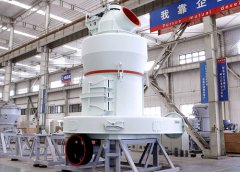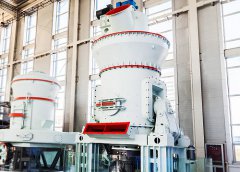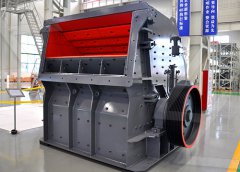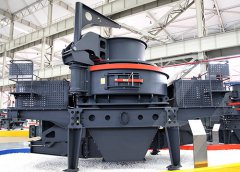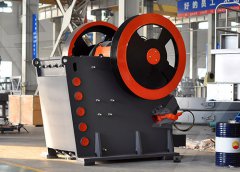
Cement
Perhaps the earliest known occurrence of cement is from twelve million years ago. A deposit of cement was formed after an occurrence of oil shale located adjacent to a bed of limestone burned by natural causes. These ancient deposits were investigated in the 1960s and 1970s. Cement, chemically speaking, is a product that includes lime as the primary binThis paper presents an analysis of the cement manufacturing process, an outline of the pollutants generated from (PDF) Cement Manufacturing ResearchGate
احصل على السعر
Cement Production an overview ScienceDirect Topics
Cement production is a thermal energy intensive process, which requires heating solid particles up to 1450°C and cooling it down. The process generates hot and CO2 rich It is estimated that global cement production reached 4.1 giga-tons in 2019, with China producing the large share. Because of the importance of cement as a construction Cement Manufacture an overview ScienceDirect Topics
احصل على السعر
Global cement industry statistics & facts Statista
Worldwide Cement is a key construction material used throughout the world as a binding agent in concrete and mortar. The history of cement dates back Cement manufacturing is an extremely energy-intensive method of processing. The energy consumption is measured at around 2% of global primary energy consumption, or approximately 5% of total Introductory Chapter: Cement Industry IntechOpen
احصل على السعر
The Cement Manufacturing Process Thermo Fisher
Cement manufacturing is a complex process that begins with mining and then grinding raw materials that include limestone and clay, to a fine powder, called raw meal, which is then heated to a sintering It has an annual production capacity of one million metric tons of cement and produces several types of cement. The plant has an average overall equipment Digitization and the future of the cement plant McKinsey
احصل على السعر
Master the Art of Cement Manufacturing: 9-Step Business Plan
Understand their needs, preferences, and purchasing behaviors. Analyze the competition: Identify your direct and indirect competitors in the market. Assess their strengths, weaknesses, market share, pricing strategies, and product offerings. This will help you position your cement manufacturing plant effectively.Air pollution is a major problem in Bangladesh. Cement industries are one of the most top contributors to GDP. They produce a lot of pollution in the environment. Local manufacturers do notA case study on Air Pollution in Cement Industry
احصل على السعر
About Cement Cement
Cement manufacturing and distribution provide jobs and investment in regional Australia as well as the suburban and industrial areas of our cities. How is cement made? There are three main stages of cement production: The process begins with the mined raw materials being ground into a raw meal ready for the kiln.However, the manufacture of cement can contaminate the environment in particularly if it is not managed properly. Emission of gases and dust particulates by the cement industry may affect human health. Portland cement is the most common type of cement. It is obtained from grinding cement clinker.Environmental impact of some cement manufacturing plants in Saudi
احصل على السعر
Green cement production in India: prioritization and alleviation of
Cement is a fundamental building and construction material for societies around the world. However, its manufacturing process is exceptionally energy intensive and has a substantial contribution to the man-made global warming potential which calls for immediate reduction. In this context, the implementation of green production practices Cement is the second most consumed material in the world after water, with no scalable substitutes today. More than 50% is made in China. Manufacturing cement creates two sources of CO₂ emissions, about 40% comes from the burning of fossil fuels to heat kilns at 1300-1450°C, and about 60% is released during the thermal Cement Industry The Net-Zero Industry Tracker World
احصل على السعر
2. Research, Development and Deployment in the Cement and Concrete
In the absence of policy pressure, an alternative cement product has to be able to generate a similar economic value to that of Portland cement in order to appeal to cement manufacturing companies. However, the switch to alternative products may raise material and energy costs, or require additional investments in storage capacity and Cement production in Tanzania reached roughly 6.5 million metric tons in 2021. The volume increased from 5.6 million metric tons in the previous year, keeping an upward trend. The growth wasTanzania: cement production 2015-2021 Statista
احصل على السعر
Introductory Chapter: Cement Industry IntechOpen
Cement manufacturing is an extremely energy-intensive method of processing. The energy consumption is measured at around 2% of global primary energy consumption, or approximately 5% of total manufacturing energy consumption [ 2 ], regarding to the prevalent use of carbon-intensive fuels, e.g. coal, in the manufacture of Chemical Properties of Cement. The raw materials for cement production are limestone (calcium), sand or clay (silicon), bauxite (aluminum) and iron ore, and may include shells, chalk, marl, shale, clay, blast furnace slag, slate. Chemical analysis of cement raw materials provides insight into the chemical properties of cement.Properties of Cement- Physical & Chemical Civil Engineering
احصل على السعر
Everything about Cement Production Thermo
Cement is the grey powdery stuff that when mixed with sand, rock, gravel and water forms concrete. The concrete is the final product used in buildings, roads, infrastructure, etc. You can think of Visit the Advancing Mining blog for news and information about the latest topics in cement manufacturing and production. Learn about technologies and equipment used in the cement process including elemental online analyzers, x-ray analyzers, belt scales, weigh belt feeders, level sensors and indicators, impact weighers, stack emission gas Cement Analysis and Production Information Thermo Fisher
احصل على السعر
Formation and hydration of eco-friendly cement using
In this work, the optimal conditions of the synthesis of eco-friendly cement by using industrial wastes as well as the peculiarities of its early stage hydration were investigated. The ecoThe diagram below shows the stages and equipment used in the cement-making process, and how cement is used to produce concrete for building purposes. You should spend about 20 minutes on this task. Summarise the information by selecting and reporting the main features and making comparisons where relevant. You should write at Stages and Equipment Used in the Cement-Making Process
احصل على السعر
Implementation of Lean Manufacturing in a Cement Industry
The lean manufacturing concept is a systematic minimization of waste and non-value activities in production processes introduced by the Toyota production system. In this research, lean manufacturing is implemented in a cement production line. Value Stream Mapping (VSM) is applied to give a clear picture of the value chain in by cement manufacturing (106Mt in 2016), CO 2 storage will likely be an unavoidable route to achieve deep decarbonisation. Low-carbon cements The average clinker-to-cement ratio in the EU in 2017 was 75% (2). The European Standards differentiates Figure 1: Thermal energy consumption by fuel in the EU cement sector Note: The CODeep decarbonisation of industry: The cement sector europa.eu
احصل على السعر
Materials Free Full-Text Naturally Derived Cements Learned
For over a thousand years, many ancient cements have remained durable despite long-term exposure to atmospheric or humid agents. This review paper summarizes technologies of worldwide ancient architectures which have shown remarkable durability that has preserved them over thousands of years of constant erosion. We aim to identify the Cement is a fine powder made from a combination of minerals that is used in construction to bind other materials such as sand, gravel, The cement manufacturing unit in Turkey was first started in Darica Cement Factory in 1913 with a What Is Cement Definition, History, Types & Application
احصل على السعر
A systematic literature review on green manufacturing concepts
In this section of the paper, an attempt is made to comprehensively and systematically. review the literature on green cement industries and classify it, so that it can be easily. comprehended andSwitch to statistics view. Cement plant locations and information on South Sudan can be found below. For full access to the database, purchase The Global Cement Report™, 14th Edition. Purchase. Summary. Cement capacity (Mt) Integrated plants. 0. Clinker plants.Cement Plants located in South Sudan The Global Cement Report
احصل على السعر
